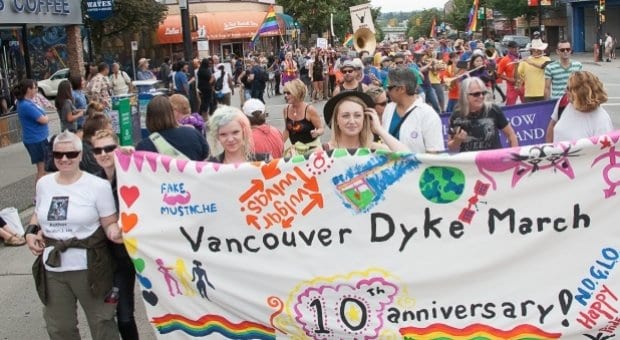
Credit: Janet Rerecich
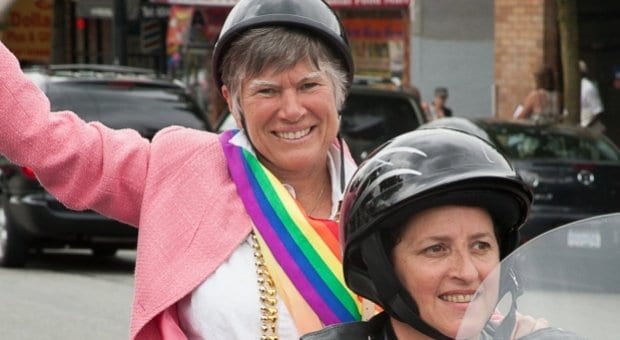
Ellen Woodsworth rides in a place of honour on the back of a motorcycle. Credit: Janet Rerecich
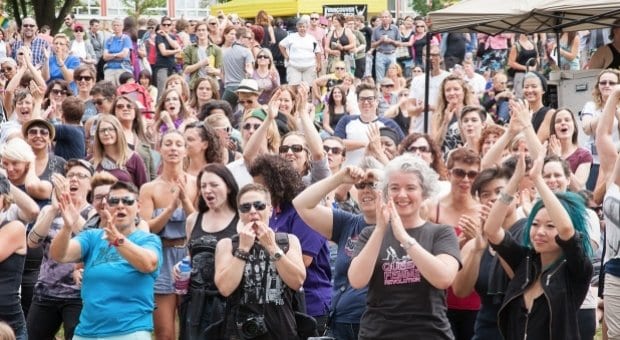
Credit: Janet Rerecich
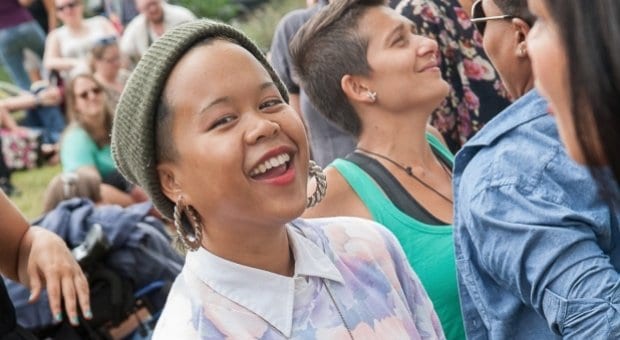
Kim Villagante enjoys the post-Dyke March festival in Grandview Park. Credit: Janet Rerecich

Elaine Tess (left) met her partner, Karen White (right), at the Dyke March eight years ago. Credit: Janet Rerecich

Fake Moustache performs at the festival in Grandview Park. Credit: Janet Rerecich
The heat broke and the rain cleared just in time for the Vancouver Dyke March and Festival’s 10th annual event on Commercial Drive, Aug 3.
The march, escorted from McSpadden Park to Grandview Park by police on motorcycles, attracted several hundred people, and more arrived for the festival at the end of the route.
This year’s celebration included haircuts, roller-derby displays, music and dancing, with performances by acts such as the butch choir Leadfoot and Queer as Funk.
Naomi Nattrass Moses marched as part of a contingent from the Mabel League, an inclusive softball club committed to providing a safe place for women and trans players to build community. She believes it’s important that the Dyke March has held on to its political roots amidst the celebration, unlike the Davie Street Pride events, which have become less and less political over the years.
“I think a lot of our community is not privileged enough to have the luxury of giving up their politics,” she says.
The queer women’s community in Vancouver includes a variety of often-marginalized communities, she says, from trans women to women with children and women of lower socioeconomic status. It’s important to recognize the overlaps between the lesbian community and the queer community as a whole, she says, but it’s also important to make space for queer women’s issues.
“We’re not there yet. We’ve got lots of room to improve on lots of different issues.”
The balance between representation and inclusivity is something Jaedyn Starr has spent a lot of time considering. Starr, who identifies not as male or female but as trans, has complicated feelings about the Dyke March.
“I used to identify as a lesbian, and then when I started to see myself as trans, I didn’t want to be seen as a lesbian, although I didn’t want to lose my connections with queer women or the dyke community.”
But over time Starr, an independent workshop facilitator who addresses trans issues and issues around consent, began to see the word dyke as gender-inclusive. Starr also attended the Trans and Genderqueer Celebration March and would like to see stronger connections develop between queer women and trans people, both socially and politically.
“My ideal march wouldn’t be a Dyke March or a Trans March, but a march where people of all backgrounds and life experiences and struggles can march together with the intent of questioning current norms.”
Dyke March organizer Michelle Fortin agrees that greater inclusivity is a major goal going forward, in particular fostering stronger connections between dykes and trans people and engaging more young women.
While loosely organized marches have been happening in Vancouver for decades, this particular iteration of the Dyke March, including the festival at the end of the route, has been happening for only 10 years. Fortin says this version of the march was started by two women who had marched in other cities, but none of those events had any activities at the end of the marches. Participants would simply disperse.
“That community piece, that celebration and visibility and that sense of ownership, was really what those women had in mind.”
Fortin says the march’s relationship to Pride weekend has evolved over the last 10 years to the point where the Vancouver Pride Society is supportive of the Dyke March but also recognizes the necessity of the separation. Preserving the grassroots nature of the event is crucial to the visibility of the unique interests of the dyke community.
“I believe that if you’re queer, you’re political,” she says.
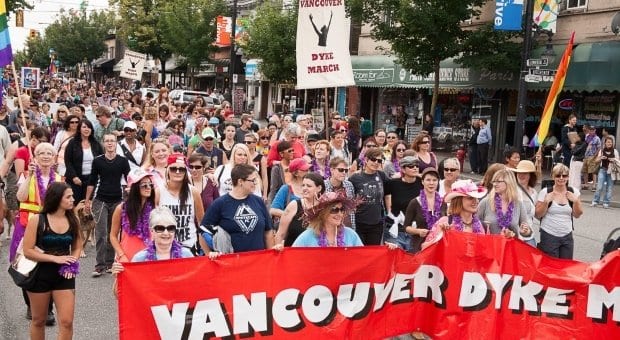
 Why you can trust Xtra
Why you can trust Xtra


